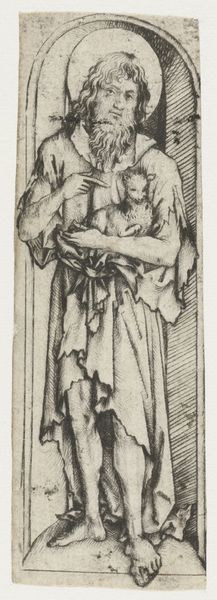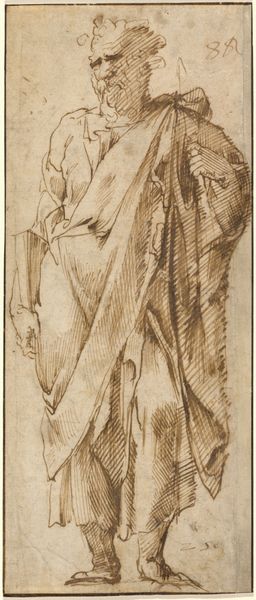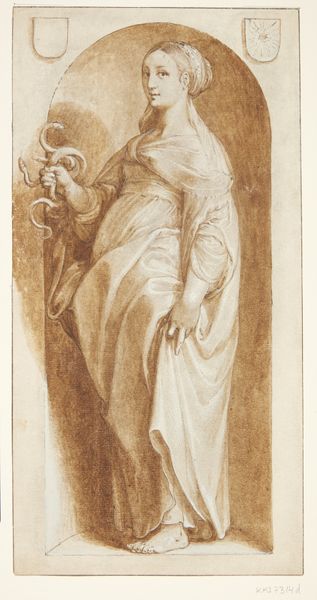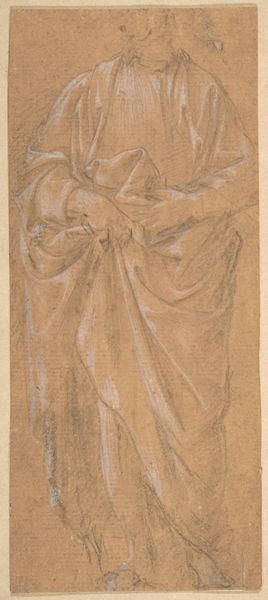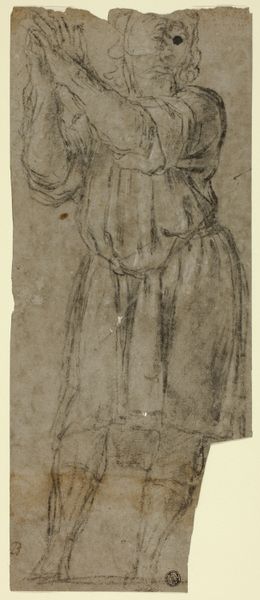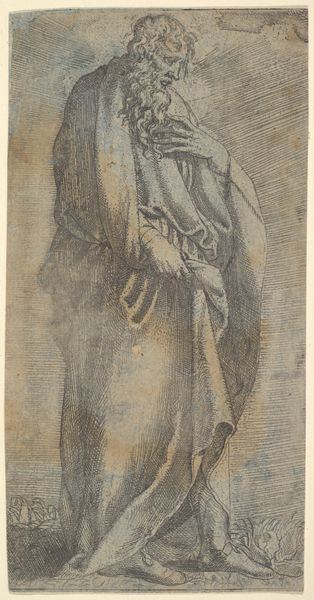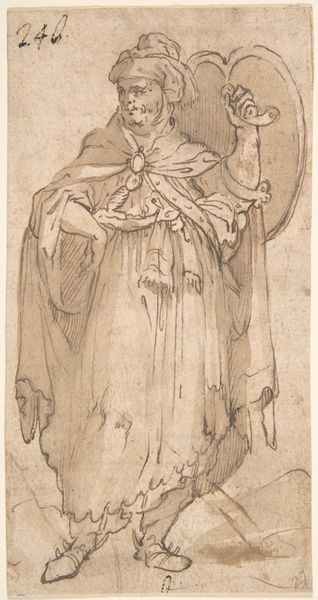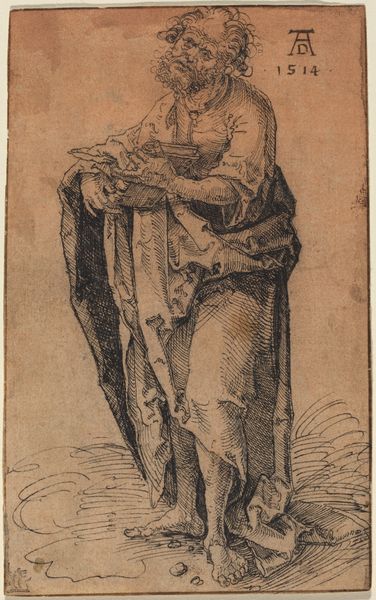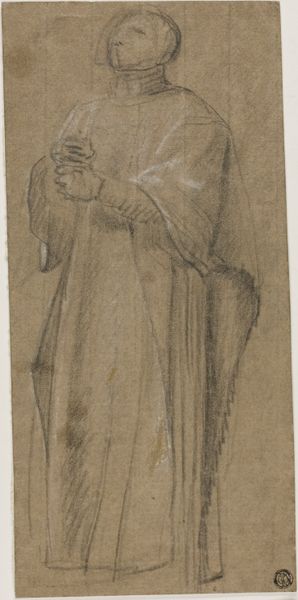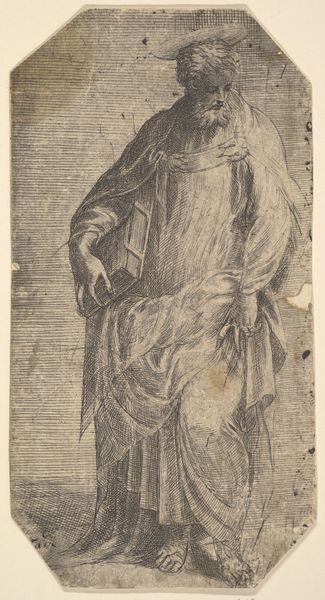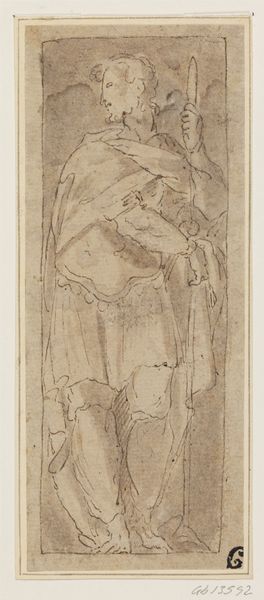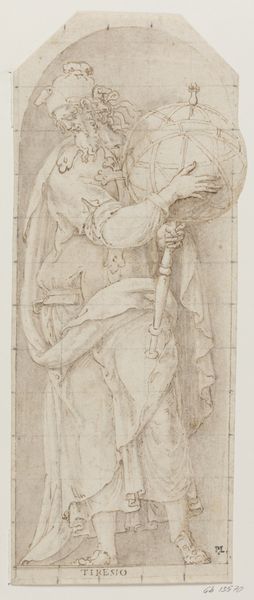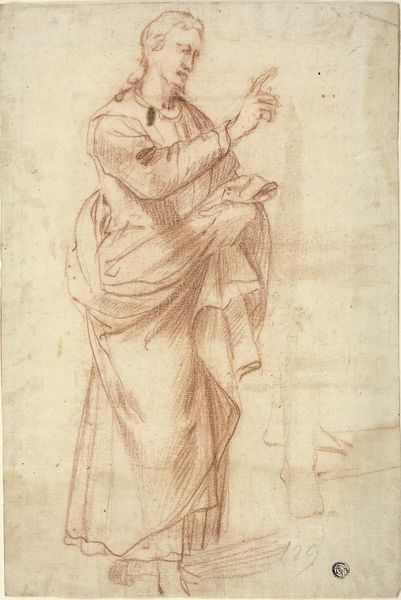
drawing, paper, ink, chalk, charcoal
#
portrait
#
drawing
#
medieval
#
charcoal drawing
#
figuration
#
paper
#
charcoal art
#
ink
#
pencil drawing
#
chalk
#
charcoal
#
history-painting
Dimensions: 252 × 119 mm
Copyright: Public Domain
Editor: We’re looking at "Weeping Saint John the Evangelist," an undated drawing from an anonymous artist at the Art Institute of Chicago. It’s rendered in charcoal, ink, chalk, and pencil on paper, a combination that creates soft, mournful tones. What do you see in this piece, and what stories might it be trying to tell us? Curator: This drawing is a potent example of how art has historically been used to construct and reinforce gendered ideas about emotion and spirituality. Note the effeminate features ascribed to John – the soft curls, the delicate hands covering his face. We’re invited to witness not just grief, but a particularly *feminized* form of grief, locating compassion as a supposedly ‘feminine’ trait. Editor: That's fascinating. So, you're saying it's less about genuine grief and more about projecting societal expectations onto this religious figure? Curator: Precisely. Consider the historical context: who was this work intended for, and what message was it meant to convey? Was this meant to stir empathy within a specific audience, perhaps even encouraging a particular performative piety tied to accepted societal gender roles? Whose expectations and ideals are actually being visualized here? Editor: That shifts my understanding entirely. It makes me think about how easily we accept these assigned gender roles. Curator: Absolutely. And that's the power of engaging with art critically. By interrogating the underlying assumptions, we can challenge these conventional, historically oppressive narratives. Editor: I will never look at religious art the same way again. Thank you. Curator: The pleasure is mine. Let us keep digging into art to dismantle assumptions.
Comments
No comments
Be the first to comment and join the conversation on the ultimate creative platform.
